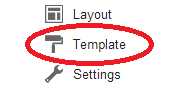As part of our quest to power our operations with 100% renewable energy, we’ve agreed to purchase the entire output of the 240 MW Happy Hereford wind farm outside of Amarillo, Texas. This agreement represents our fifth long-term agreement and our largest commitment yet; we’ve now contracted for more than 570 MW of wind energy, which is enough energy to power approximately 170,000 U.S. households.
The Happy Hereford wind farm, which is expected to start producing energy in late 2014, is being developed by Chermac Energy, a small, Native American-owned company based in Oklahoma. The wind farm will provide energy to the Southwest Power Pool (SPP), the regional grid that serves our Mayes County, Okla. data center.
The structure of this agreement is similar to our earlier commitments in Iowa and Oklahoma. Due to the current structure of the market, we can’t consume the renewable energy produced by the wind farm directly, but the impact on our overall carbon footprint and the amount of renewable energy on the grid is the same as if we could consume it. After purchasing the renewable energy, we’ll retire the renewable energy credits (RECs) and sell the energy itself to the wholesale market. We’ll apply any additional RECs produced under this agreement to reduce our carbon footprint elsewhere.
This type of power purchase agreement represents one of several ways we’re working to make additional renewable energy available for both our data centers and the communities in which we operate. In Scandinavia, due to the region’s unified power market and grid system, we’re able to purchase wind energy in Sweden and directly consume it at our Hamina, Finland data center. We’re also working with our local utility partners to develop new options. In 2012, we signed an agreement with GRDA, our utility partner in Oklahoma, to green the energy supply to our Oklahoma data center with 48 MW of wind energy from the Canadian Hills Wind Project. Earlier this year, we began working with Duke Energy to develop a new renewable energy tariff (PDF) in North Carolina.
We take a comprehensive approach to acquiring renewable energy for our operations. We’ll continue working directly with utility providers, collaborating with industry regulators and pursuing creative agreements (PDF) like the Happy Hereford PPA.
The Happy Hereford wind farm, which is expected to start producing energy in late 2014, is being developed by Chermac Energy, a small, Native American-owned company based in Oklahoma. The wind farm will provide energy to the Southwest Power Pool (SPP), the regional grid that serves our Mayes County, Okla. data center.
Some (happy) cows on the future site of the wind farm.
The cows will still have plenty of room to graze between the turbines.
The structure of this agreement is similar to our earlier commitments in Iowa and Oklahoma. Due to the current structure of the market, we can’t consume the renewable energy produced by the wind farm directly, but the impact on our overall carbon footprint and the amount of renewable energy on the grid is the same as if we could consume it. After purchasing the renewable energy, we’ll retire the renewable energy credits (RECs) and sell the energy itself to the wholesale market. We’ll apply any additional RECs produced under this agreement to reduce our carbon footprint elsewhere.
This type of power purchase agreement represents one of several ways we’re working to make additional renewable energy available for both our data centers and the communities in which we operate. In Scandinavia, due to the region’s unified power market and grid system, we’re able to purchase wind energy in Sweden and directly consume it at our Hamina, Finland data center. We’re also working with our local utility partners to develop new options. In 2012, we signed an agreement with GRDA, our utility partner in Oklahoma, to green the energy supply to our Oklahoma data center with 48 MW of wind energy from the Canadian Hills Wind Project. Earlier this year, we began working with Duke Energy to develop a new renewable energy tariff (PDF) in North Carolina.
We take a comprehensive approach to acquiring renewable energy for our operations. We’ll continue working directly with utility providers, collaborating with industry regulators and pursuing creative agreements (PDF) like the Happy Hereford PPA.

























